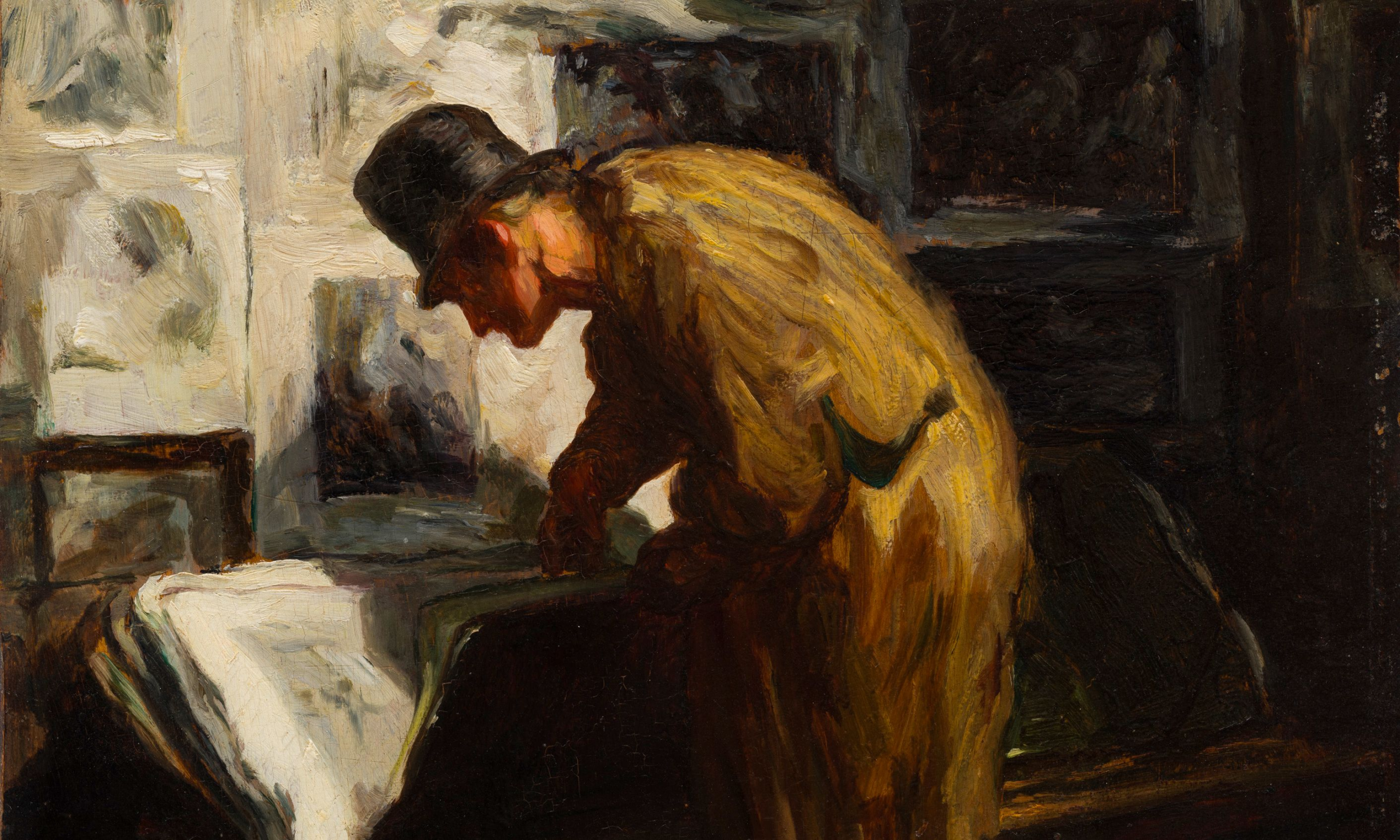Honoré Daumier, L’Amateur d’estampes (the print collector, around 1860–62) © Private collection
For its 125th birthday, the Städel Museum in Frankfurt is to receive one of the biggest collections of works by Honoré Daumier outside France as a gift from the collector Hans-Jürgen Hellwig. A selection of these are going on show at the museum from 24 January until 12 May.
Hellwig has agreed to donate 4,200 lithographs and wood engravings, 19 drawings, two paintings and two bronze sculptures by the 19th-century French artist to the Städel’s friends’ association in June this year. Many of the works have never been exhibited. The Städel will show 120, among them 17 drawings.
The gift will make the Städel “one of the most important centres for Daumier research in Germany,” Philipp Demandt, the director of the museum, said in a statement. He promised an exhibition that “offers visitors sensuous pleasure, sharpens minds and invites debate about the basic questions of our time.”
Honoré Daumier, La lecture du Charivari (the reading of the Charivari, 1840) © Private collection
Best known for his cartoons, Daumier was a sharp, satirical commentator on the politics of his era; a republican who frequently scorned King Louis Philippe I and a staunch defender of liberal ideas and free speech. Daumier’s cartoons were published in the newspaper La Caricature and Le Charivari. Contemporaries such as Eugène Delacroix and Charles Baudelaire admired his draftsmanship.
Some of the prints in Hellwig’s collection bear comments from censors, “giving a fascinating insight into the complex publication process of these pages in an era of censorship,” the Städel statement said. After the censors became more iron-handed in 1835, Le Charivari‘s cartoons focussed primarily on satirical observations of society and everyday life.
Daumier created the character Robert Macaire, an unscrupulous con artist bent on getting rich quick—and a mocking embodiment of the materialistic mindset of the July Monarchy.
His later creations included Ratapoil, a shabbily dressed unofficial policeman employed by the president and later emperor Louis Napoléon Bonaparte. Daumier’s topics ranged from world trade fairs and the railway to Baron Haussmann’s redesign of Paris and the invention of photography. An 1862 work in the exhibition is called Nadar elevating photography to the level of art.
Honoré Daumier, Madame déménage! (Madame is moving!, 1867) © Private collection
Hellwig is a lawyer and long-serving Frankfurt local politician who has collected art for the past 60 years and was advised by Margret Stuffmann, a former prints and drawings curator at the Städel who encouraged him to extend his collection beyond Daumier’s political cartoons to paintings, drawings and sculptures, and put him in touch with dealers around the world. Hellwig has also served more than three decades on the board of the Städel’s friends’ association. His collection reflects a particular interest in Daumier’s political lithographs.
His collection began, he wrote in an introduction to the exhibition catalogue, with his father and with Konrad Adenauer, the first post-war chancellor of West Germany. Hellwig’s father, an avid collector of historic maps, was a member of the German parliament. He was charged with buying a present for Adenauer on behalf of the parliamentary economics committee and purchased a number of political cartoons. Of these he set aside two Daumier works which were not in perfect condition.
He offered them to the young Hellwig. “But now you must find out more about them—who was Daumier, who are the people depicted and why have they been caricatured,” he said. Hellwig was keen to collect, but he did not want to compete with his father on maps. “So via Adenauer, I came to Daumier,” he wrote.

